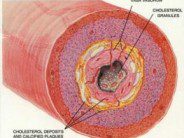 There have been 18 confirmed deaths and over 1,500 individuals infected with a rare strain of Escherichia coli bacteria in 10 different European countries. Austria, Denmark, Germany, France, the Netherlands, Norway, Spain, Sweden, Switzerland, and the U.K. have reported cases of the infection. The outbreak does not seem to be slowing and is causing great concern among health officials in Europe and the United States, who have stated that it is the worst in recorded history. The bacteria responsible for the deadly outbreak has been identified as a strain of enterohemorrhagic Escherichia coli (EHEC) designated O104:H4. The World Health Organization (WHO) reported that the strain has been “seen in humans before but never in an EHEC outbreak”. This bacterium is particularly virulent and can cause hemorrhagic colitis with bloody diarrhea, which can ultimately develop into hemolytic uremic syndrome (HUS). HUS is characterized by hemolysis of blood cells resulting in anemia and thrombocytopenia and kidney failure requiring dialysis. The virulence of the bacterium results from a toxin that it produces known as Shigatoxins or verotoxins, which damage blood cells and the kidneys. The EHEC bacterium that produces these types of toxins is classified as Shigatoxin-producing E. coli (STEC). The WHO reported that “As of 30 May 2011, 400 cases of HUS and 843 cases of EHEC infection (1243 in total) were reported to WHO. Most of these were in Germany, where there were 373 cases of HUS and 796 of EHEC”. Almost every case so far reported has occurred in individuals who traveled to the northern region of Germany or have come into contact with someone who has traveled there. In addition, the WHO reported that “As of 30 May 2011 in Germany, 61% of reported EHEC cases were in women and girls, and 88% in people aged 20 years or older. The corresponding figures for HUS cases were both 88%”. This is in stark contrast to the typical infection patterns for this bacterium, which usually infects the very young or the very old. Scientists from the Beijing Genomics Institute in China have sequenced the genome of the bacteria and have found that it is resistant to many different antibiotics including aminoglycosides, macrolides, and beta-lactam antibiotics. The exact origin of the bacterium is currently unknown. It was initially thought to have originated from cucumbers from Spain but that theory has since been disproven. Russia has banned all vegetables coming from the European Union until the exact source is identified. Farmers throughout Europe have lost millions of dollars as their vegetable are unable to be sold. There is ongoing debate as to whether antibiotics should be used as part of the treatment. Antibiotic use can sometimes exacerbate the virulence of the bacterium. German doctors have begun using an experimental drug called eculizumab which has been shown to have some benefit in the treatment of HUS. The current E. coli outbreak emphasizes the fact that we need to be prepared for future outbreaks of infectious diseases that have new antibiotic resistance patterns and modes of virulence.
There have been 18 confirmed deaths and over 1,500 individuals infected with a rare strain of Escherichia coli bacteria in 10 different European countries. Austria, Denmark, Germany, France, the Netherlands, Norway, Spain, Sweden, Switzerland, and the U.K. have reported cases of the infection. The outbreak does not seem to be slowing and is causing great concern among health officials in Europe and the United States, who have stated that it is the worst in recorded history. The bacteria responsible for the deadly outbreak has been identified as a strain of enterohemorrhagic Escherichia coli (EHEC) designated O104:H4. The World Health Organization (WHO) reported that the strain has been “seen in humans before but never in an EHEC outbreak”. This bacterium is particularly virulent and can cause hemorrhagic colitis with bloody diarrhea, which can ultimately develop into hemolytic uremic syndrome (HUS). HUS is characterized by hemolysis of blood cells resulting in anemia and thrombocytopenia and kidney failure requiring dialysis. The virulence of the bacterium results from a toxin that it produces known as Shigatoxins or verotoxins, which damage blood cells and the kidneys. The EHEC bacterium that produces these types of toxins is classified as Shigatoxin-producing E. coli (STEC). The WHO reported that “As of 30 May 2011, 400 cases of HUS and 843 cases of EHEC infection (1243 in total) were reported to WHO. Most of these were in Germany, where there were 373 cases of HUS and 796 of EHEC”. Almost every case so far reported has occurred in individuals who traveled to the northern region of Germany or have come into contact with someone who has traveled there. In addition, the WHO reported that “As of 30 May 2011 in Germany, 61% of reported EHEC cases were in women and girls, and 88% in people aged 20 years or older. The corresponding figures for HUS cases were both 88%”. This is in stark contrast to the typical infection patterns for this bacterium, which usually infects the very young or the very old. Scientists from the Beijing Genomics Institute in China have sequenced the genome of the bacteria and have found that it is resistant to many different antibiotics including aminoglycosides, macrolides, and beta-lactam antibiotics. The exact origin of the bacterium is currently unknown. It was initially thought to have originated from cucumbers from Spain but that theory has since been disproven. Russia has banned all vegetables coming from the European Union until the exact source is identified. Farmers throughout Europe have lost millions of dollars as their vegetable are unable to be sold. There is ongoing debate as to whether antibiotics should be used as part of the treatment. Antibiotic use can sometimes exacerbate the virulence of the bacterium. German doctors have begun using an experimental drug called eculizumab which has been shown to have some benefit in the treatment of HUS. The current E. coli outbreak emphasizes the fact that we need to be prepared for future outbreaks of infectious diseases that have new antibiotic resistance patterns and modes of virulence.










 DrSamGirgis.com is a blog about medicine, nutrition, health, wellness, and breaking medical news. At DrSamGirgis.com, the goal is to provide a forum for discussion on health and wellness topics and to provide the latest medical research findings and breaking medical news commentary.
DrSamGirgis.com is a blog about medicine, nutrition, health, wellness, and breaking medical news. At DrSamGirgis.com, the goal is to provide a forum for discussion on health and wellness topics and to provide the latest medical research findings and breaking medical news commentary.
{ 2 comments… read them below or add one }
Scary! Have they figured out where it’s coming from yet?
Colitis can be prevented by adjusting your diet and choosing your foods wisely.